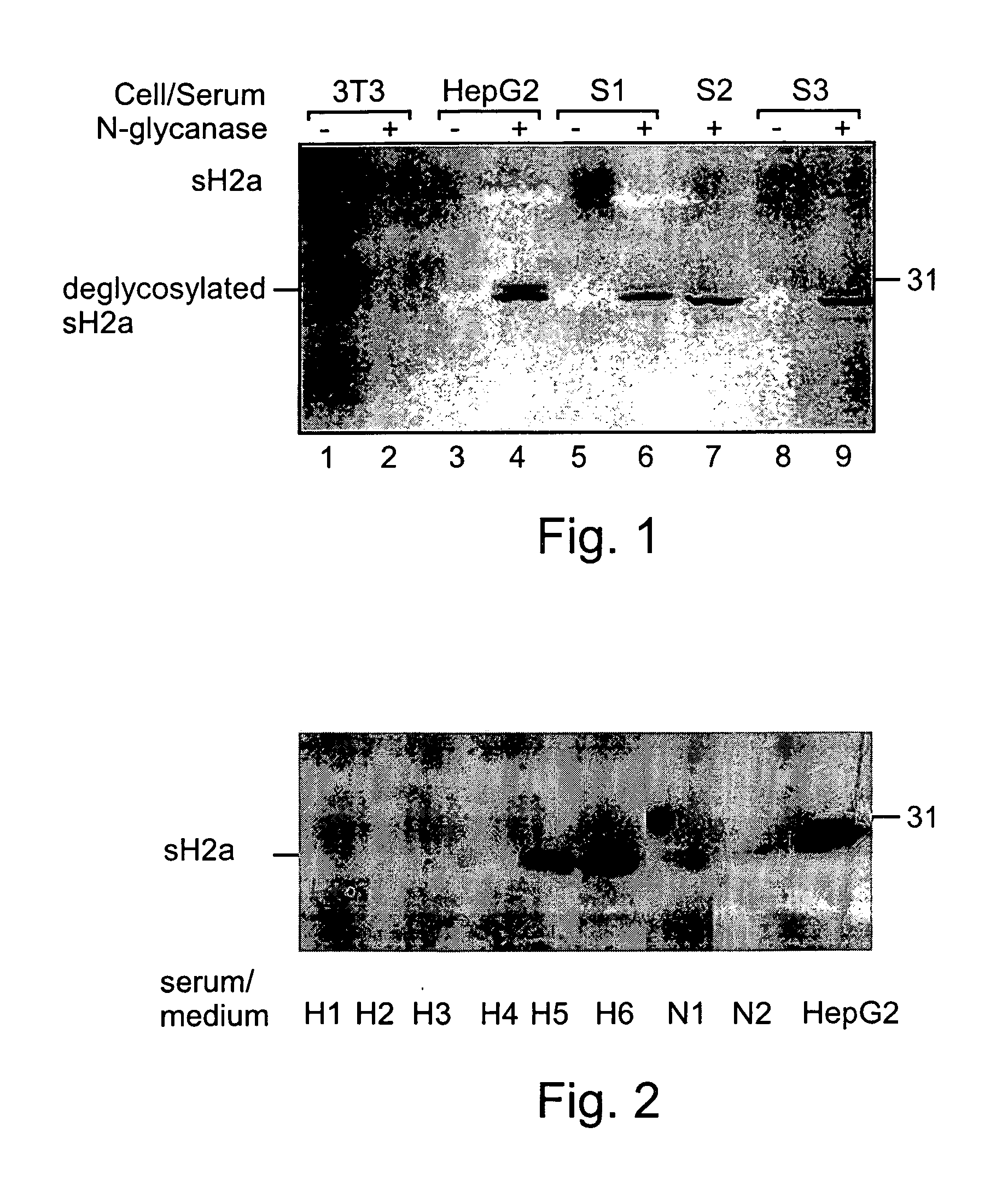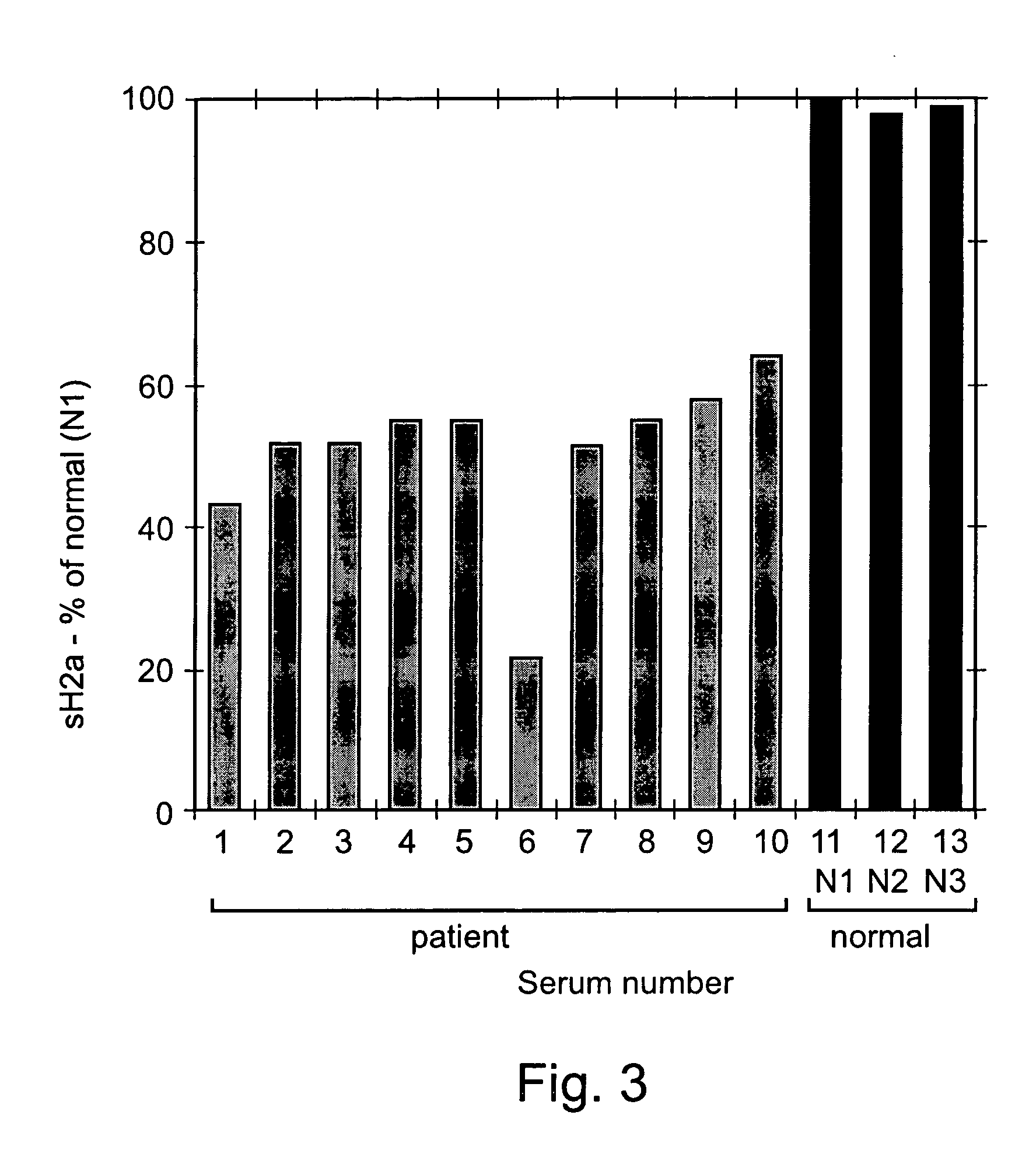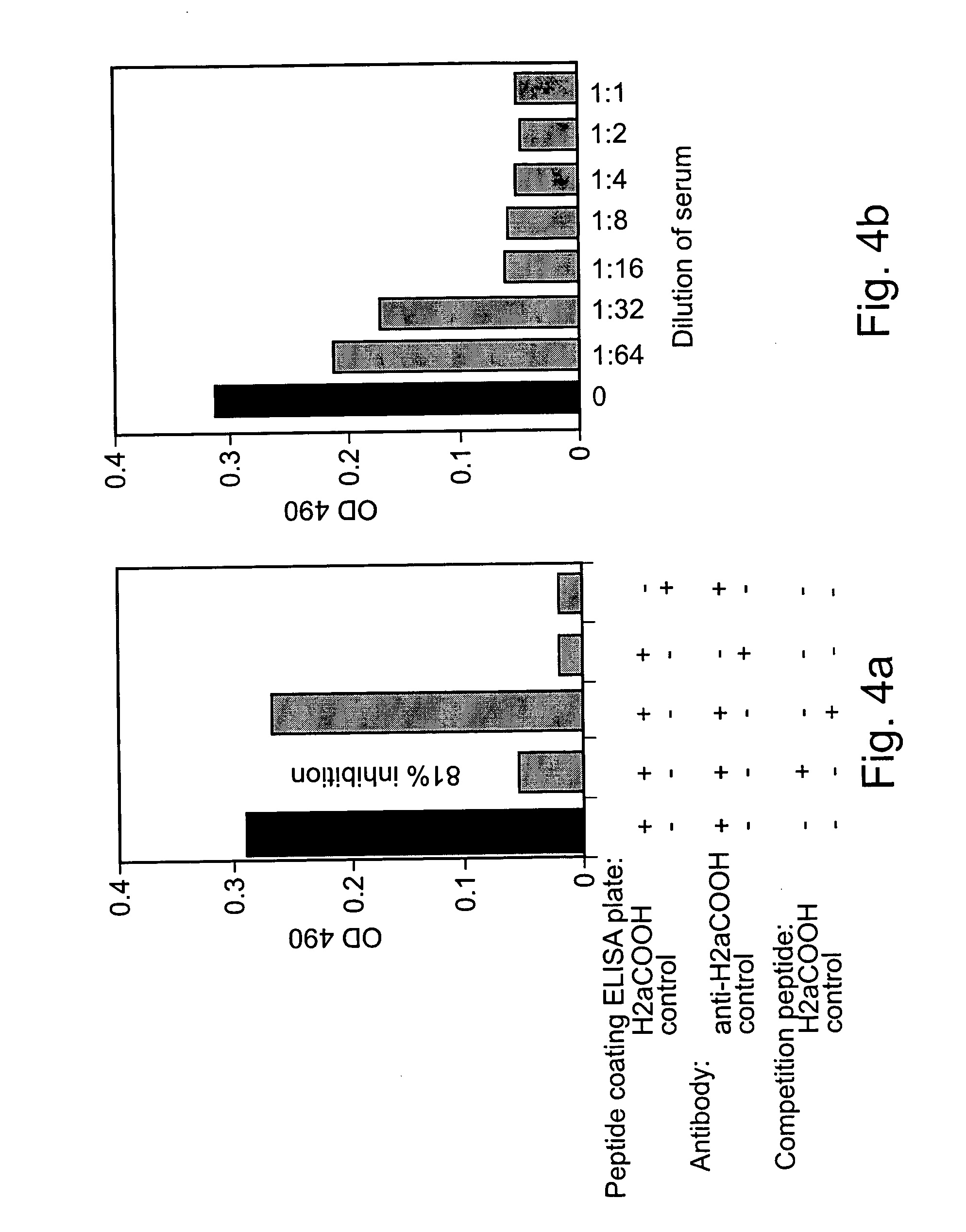Novel non-invasive marker for liver function and disease
- Summary
- Abstract
- Description
- Claims
- Application Information
AI Technical Summary
Benefits of technology
Problems solved by technology
Method used
Image
Examples
example 1
Detection of sH2a in Human Sera
[0172] As mentioned above, it has been previously shown that ASPGR is secreted from the Human Hepatoma cell line HepG2 cells. However, in order to find out the physiological relevance of the soluble form of the receptor it was important to know whether it is also secreted from normal hepatocytes.
[0173] A mixture of monoclonal anti-ASGPR antibodies was previously reported to reveal immunoreactive bands on a Western blot containing samples of human serum (8). Although that report does not elucidate whether the detected bands were representative of H1, H2a or H2b, the molecular weight of ˜40 kDa is consistent with the found mass of the secreted H2a fragment. An experiment was performed in order to ascertain the presence or lack thereof of secreted ASPGR in normal human sera samples, as described below.
[0174] Experimental Methods
[0175] 1.2 ml cell supernatants from 90 mm petri-dishes of 3T3 (lanes 1-2) or HepG2 (lanes 4-5), or 0.3 ml of normal human se...
example 2
Downregulation of Serum Levels of sH2a in Liver Cancer
[0179] Experimental Methods
[0180] 0.1 ml of sera from 8 samples was immunoprecipitated with anti-H2 carboxy-terminal antibody and treated with N-glycanase. The samples were run on 12% SDS-PAGE. The gel was blotted and the blot was reacted with the anti-H2 antibody followed by goat anti-rabbit peroxidase. The detection was performed by the ECL procedure. All the methods were preformed substantially as described above in the materials and methods section.
[0181] Five of the samples were taken from patients with liver cell carcinoma (H1-H5), one was taken from a patient after liver transplantation (H6), two samples were taken from healthy individuals (N1-N2), and one was cell supernatant of HepG2 cells (HepG2).
[0182] Experimental Results
[0183] As can be seen in FIG. 2, similar amounts of sH2a were found in several normal human sera tested (lanes N1, N2). However, the sH2a level was much reduced in sera from patients with liver c...
example 3
ELISA Assay Using Polyclonal Antibodies in Order to Quantitate Serum Levels of sH2a
[0186] Experimental Methods
[0187] 5 μg / ml of a peptide from H2a that was used to produce the anti-H2a antibody in rabbits was incubated for 2 hours to immobilize it on an ELISA plate. The plate was then reacted with anti-H2a serum [1:2000 in 0.3% BSA in TBS (154 mM NaCl in 10 mM Tris-HCl, pH 7.5)] that had been preincubated with normal human sera (N1-N3) or with sera from hepatocarcinoma patients. The plate was then incubated with 0.08 μg / ml of goat anti-rabbit antibodies conjugated to HRP in 0.3% BSA in TBS, and reacted with 0.4 mg / ml o-phenylenediamine (Sigma P-6787) in 500 mM phosphate-citrate buffer, pH 5 (Sigma, P4809). The developed color was then quantified in an ELISA reader spectrophotometer.
[0188] Experimental Results
[0189] In order to obtain a quantitative measure of the concentration of sH2a in serum and for better comparative analysis, an ELISA assay was developed. The assay is based ...
PUM
 Login to View More
Login to View More Abstract
Description
Claims
Application Information
 Login to View More
Login to View More - R&D
- Intellectual Property
- Life Sciences
- Materials
- Tech Scout
- Unparalleled Data Quality
- Higher Quality Content
- 60% Fewer Hallucinations
Browse by: Latest US Patents, China's latest patents, Technical Efficacy Thesaurus, Application Domain, Technology Topic, Popular Technical Reports.
© 2025 PatSnap. All rights reserved.Legal|Privacy policy|Modern Slavery Act Transparency Statement|Sitemap|About US| Contact US: help@patsnap.com



